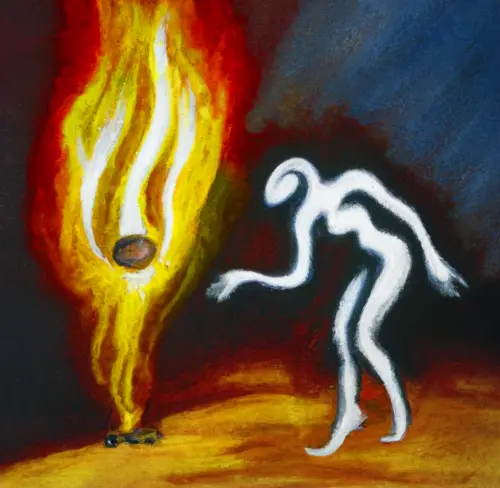Seeing a Phenoix in your dream can symbolize a fresh start, a new beginning, or the end of a chapter of your life. From Harry Potter to Greek Mythology, the Phoenix has always been a symbol of rebirth and immortality. Seeing a Phoenix in your dream is often a positive sign that you may be on the brink of a new beginning in any aspect of your life.
The symbolism of seeing a Phoenix in your dream?
In mythology, the Phoenix is a potent representation of rebirth and fresh starts. When something or someone unexpected makes an appearance in one’s life, it is indicative of a spiritual transformation, also known as a conscious shift.
Since the Phoenix is predominantly made of fire and ascends to the heavens in an upward motion, it is a metaphor for the rebirth of one’s inner self.
In dreams, the Phoenix is a symbol of rebirth and a fresh start. The Phoenix is a symbol of reincarnation and rebirth due to its seemingly endless capacity for regeneration. Everything that follows this is bound to be absolutely amazing.
It’s possible that this is the final chapter of your life or the beginning of an exciting new one. To go on with confidence in the here and now, maybe as easy as letting go of the sorrow and negativity of the past.
A sighting of a Phoenix in your dream could indicate the start of change, a new beginning. This may range from your career, family, or even hobbies and interests.
Seeing a Phoenix in your dream is considered a positive sighting, and is a symbol of positive change.

Is a Phoenix Real?
While talking about the symbolism of seeing a phoenix in your dream, let us tell you although the phoenix was not a real bird, it is thought that real birds like the eagle, hawk, flamingo, crane, and peacock may have served as inspirations. Archaeologists in the United Arab Emirates uncovered the bones of a gigantic heron that stood as tall as a human.
The Myths of the Phoenix
If you want to know the symbolism of seeing a phoenix in your dream you can’t skip the myths about it. According to folklore, the Phoenix is a unique bird capable of living for a whopping five hundred years. In his final days, he builds a nest to rest in.
Scented herbs like myrrh, cinnamon, sage, cassia, and frankincense are used to construct the nest. Finally, the phoenix smashes a boulder with his beak, setting fire to the surface.
Then, he uses his wings as bellows and burns down his home before he perishes in the flames.
The phoenix is a magical bird because after dying in the flames, it may magically be reborn in its nest.
So, to paraphrase an old adage, the phoenix does really emerge from its ashes.
After that, he goes outside and gathers the ashes, rolling those into an egg before sealing them with myrrh. The next stop on his journey is the Temple of the Sun in Heliopolis, Egypt, where he will present the egg to the solar god Ra.
If you believe the myth, the Phoenix’s tears can cure any wound and his ashes can resurrect the dead.
The Phoenix and Ancient Age
Interestingly, phoenixes are sometimes compared to herons; yet, we may more accurately refer to them as “super-herons” because the phoenix is a legendary bird that represents rebirth and, by extension, immortality. The phoenix, in contrast to the mortal heron, is immortal.
The old Greek term for red—that flaming, burning color—is where the English word “phoenix” gets its origin.
There is a connection to the color purple, which may allude to the rarity of this bird. Putting the bird on its funeral pyre was believed to have a cleansing and regenerative effect, allowing it to resurrect from its own ashes and continue living.
Despite its Greek origin, the phoenix myth may be traced back to ancient Egypt, where a heron named Benu was revered as the first bird on Earth.
Benu, in Heliopolis, stood for the Egyptian sun god, representing the element of fire once more. The daily setting and subsequent rising of the sun is a visual metaphor for rebirth and the unending cycle. You had to be exceedingly lucky to catch Benu because he only appeared once every 500 years.
In ancient times, people believed that phoenixes only ate dew.
The phoenix used fragrant branches and plants to create its own funeral pyre, which it then ascended. The bird was cooked to death by its own internal body temperature. After being declared dead for three days, it miraculously arose from the ashes alive again.
The ancient Romans, following the Egyptians and Greeks, held the phoenix in high esteem as a representation of their long-lasting and unfading empire.
Like the bird itself, the phoenix’s symbolism was given new life following the fall of Rome and the advent of Christianity, coming to represent the immortal soul and Christ’s Resurrection. As a counterpoint, the pelican came to represent the humanity of Christ.
